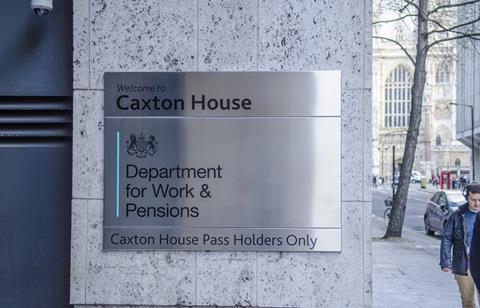
The Department for Work and Pensions (DWP) has published official guidance to help pension scheme trustees equalise the benefits of guaranteed minimum pensions (GMPs), following a High Court ruling in October 2018.
The guidance, produced in conjunction with an industry working group, was published on 18 April 2019. Designed to mitigate the effect of unequal GMP benefits between men and women, the guidance recommends a 10-step road map that pension scheme trustees can follow in order to comply with a ruling issued by the High Court in October 2018, pertaining to GMPs at financial services organisation Lloyds Banking Group.
This case relates to GMP schemes that ran between 1990 and 1997 for members who contracted out of the top-up state earnings-related pension scheme (SERP). GMPs were not recalculated to reflect the equalisation of state pension ages in the 1990s, due to lack of clarity on how this should be carried out.
Three female members of Lloyds' pension schemes took their case to court, claiming discrimination because their GMPs increased at a lower rate than equivalent male schemes. The High Court ruled in favour of the claimants and endorsed the government’s methodology for restoring equality to GMP schemes.
Guy Opperman, minister for pension and financial inclusion, said: “This vital guidance will provide pension trustees with the detailed road map they need to navigate this complicated equalisation process, ensuring they can meet their legal obligations. I am determined to ensure that pensions are fair for everyone and this guidance will help achieve this.”
A GMP is the minimum pension that an occupational pension scheme, contracted out of the additional state pension between 6 April 1978 and 5 April 1997 on a salary-related basis, has to provide to scheme members. These were abolished for contracted out services after 5 April 1997.
The guidance confirms that there is no single method by which pension schemes can equalise benefits for the effect of GMPs; trustees are expected to decide the methodology that will best suit their specific scheme.
Anna Rogers, senior partner at Arc Pensions Law, said: “We expect some schemes will be looking for ambitious restructuring that would see the current pension go up significantly, by front-loading the future pension increases. That has implications for some members who might face tax charges as a result, so care will be needed.
“There is a legal trap for schemes where the employer has changed over the years because the employer’s consent is required, and it may not be obvious what that means in practice. The calculations are complex, and the first conversions may be a headache, but we expect that, over time, the conversion may become a standard part of the journey to buy-out.”
Richard Akroyd, senior director at Willis Towers Watson, added: “Converting GMPs into other benefits avoids the need for schemes to keep dual records; without conversion, schemes will need to record the pension that the member actually received in each year and what someone of the opposite sex would have received, to ensure that treatment from retirement to date has not left anyone out of pocket. There are further advantages, especially where the scheme also converts GMPS accrued before 17 May 1990; converted benefits may be cheaper to insure and there are fewer restrictions on the options that members can be given.
“Against this, trustees may be reluctant to reshape members’ benefits significantly without giving them a choice. For example, even though changes must be on neutral terms, altering pension increase rules and adjusting the starting level of pension accordingly can lead to some members getting more or less over their lifetime, depending on how long they live and on what inflation turns out to be in future years.
“For some trustees, this may be a reason not to covert GMPs at all; for others, it may be a reason to opt for changes at the less dramatic end of the spectrum and adopt a more minimal intervention approach.”































